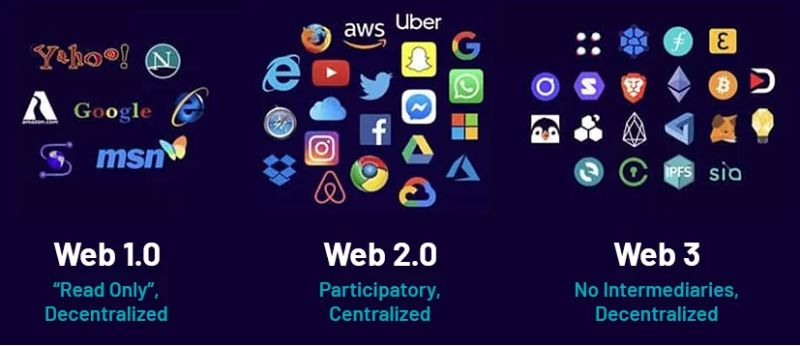Web 3 or Web 3.0 is much talked about and is quickly taking traction in he technology and financial savvy groups, but what actually is Web 3.
Let’s start from the beginning.
The first version of the internet that was publicly available to use, the World Wide Web, is referred to as Web 1.0. Dating back to the early 90s, it was largely made up of static web pages connected by hyperlinks.
Then came Web 2.0, the age of the internet as a platform. We saw the rise of e-commerce and social media sites like Facebook, Twitter, and Instagram. People gained the ability to interact with online platforms and publish content of their own. Smartphones and cloud computing were major drivers of growth here.
Web 3.0 is the next stage in the evolution of the Internet, which is based on the concept of creating a decentralized ecosystem. It aims to harness the power of modern technologies such as AI, machine learning, and blockchain to solve problems in today’s internet/online ecosystem. Here are some of the key features of Web 3.0:
a) Decentralization: This is the core idea of Web 3.0. In Web 2.0, computers use HTTP in the form of unique web addresses to find information stored in a fixed location, usually a single server. Web 3.0 finds information based on its content, so it can be stored and distributed in multiple places at the same time. This would collapse the massive databases currently maintained by internet giants such as Meta and Google, giving users more control.
b) Trustless and Permission less: Web 3.0 is trustless (meaning a network in which participants can interact directly without a trusted intermediary) and permission less (meaning anyone can join without permission). As a result, Web 3.0 applications run on blockchains or decentralized peer-to-peer networks.
c) Artificial intelligence (AI) and Machine learning: Web 3.0 will also use machine learning, a branch of artificial intelligence (AI) that uses data and algorithms to mimic human learning and incrementally improve its accuracy.
d) Connectivity and Ubiquity: Web 3.0 is designed to be more connected and ubiquitous than its predecessors. It will enable devices to communicate with each other and share data more easily, creating a more seamless and integrated online experience.
e) Redefined Data Ownership: Web 3.0 aims to redefine data ownership by giving users more control over their data. This will be achieved through the use of blockchain technology, which provides a secure and transparent way to store and share data.
Web 3.0 is still in its early stages, and its full potential is yet to be realized. However, it is clear that Web 3.0 has the potential to revolutionize the way we interact with the internet and each other.
